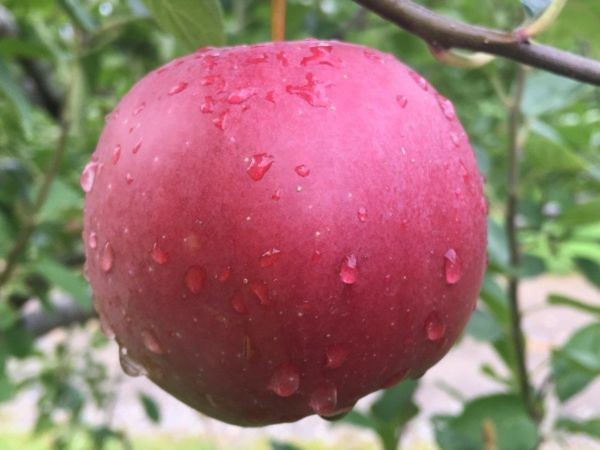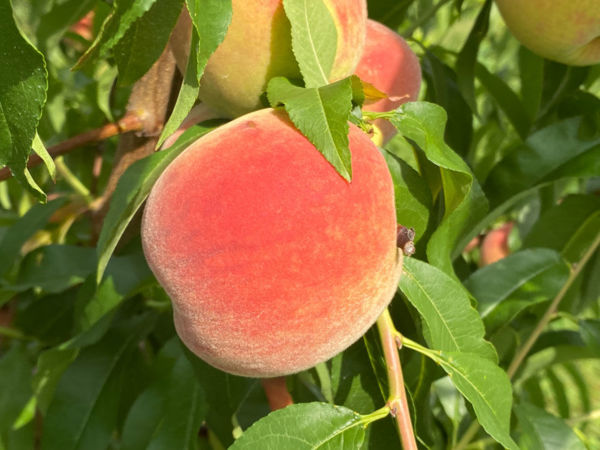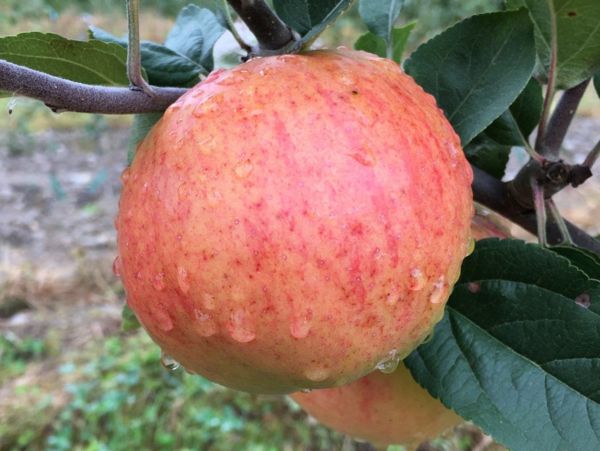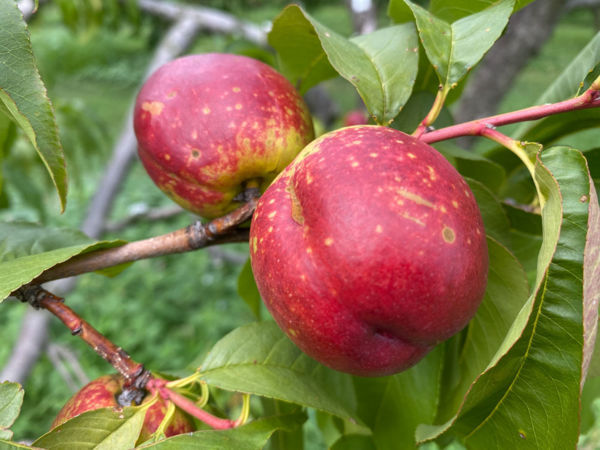An attractive, highly disease-resistant apple, ideal for organic growers.
Gilpin Apple on P.18 (Spring 2025)
You are viewing a tree that will ship in Spring 2025. You can also find trees for Spring 2024.
An American heirloom famed for its storing ability. Also known as Carthouse, Romanite, Roman Knight, Dollars and Cents.
This spreading tree is precocious, vigorous, hardy, and resistant to all major diseases. It blooms late, avoiding most frosts. All it needs is some attentive pruning and thinning to keep it annual.
The apple is smallish, striped red over a yellow background. While some tasters find the fruit unremarkable, others note that it does not develop full flavor until it has been stored for several months. And a remarkably long storage life is Gilpin's claim to fame; it was once the yardstick against which the storability of other apples was measured, and it was valued as a dessert apple to be served into spring. Gilpin hangs well on the tree and is also an excellent apple for baking and cider, producing a rich juice that is classified as bittersweet. There's not much this apple can't do; it would be a wonderful homesteading tree.
William Coxe was first to notice Gilpin; in 1817 he wrote: "It is highly esteemed for its excellence as a table apple, late in the spring, and as a good cider fruit. It is a most abundant bearer, and hangs on the tree very late in the season. The tree is hardy; of a handsome, open, spreading, and vigorous growth . . . not fit for eating until mid-winter, when it becomes juicy, tender, and fine flavored."
The Fruit
Fruit Type
Category: Apple
Subcategory:
Heirloom, Cider, Disease-Resistant, Cold-Hardy, Hot-Climate
Fruit Uses & Storage
Uses: fresh eating, cider, baking, storage, jelly, sauce
Cider classification: bittersweet
Storage duration: three plus months (approximate, depending on storage conditions)
Fruit Appearance
Skin color: red
Flesh color: yellow
Fruit Origins
Parentage: unknown
Origin: United States
Introduced in: 1819
Introduced by:
The Environment
Calendar & Geography
USDA zones: 4 - 8
Chill hours: Not yet determined
Ripening date: Oct 20 (approximate, in New York State) + 35 days after McIntosh
Tree Height & Spacing
glossary
Rootstock: P.18 Rootstock
Rootstock size class: Standard (100% Size)
Tree spacing (natural spread of tree): 35'
Good for wildlife planting? N
Diseases & Pests
glossary
Apple Scab: Resistant
Powdery Mildew: Resistant
Fireblight: Resistant
Cedar-Apple Rust: Resistant
Perennial Canker:
Pollination
Pollination Factors
glossary
Bloom group: 5
Is it self-fertile? N
Is it fertile? Y
Ploidy: Diploid
Rootstock size class:
Standard (100% Size)
Pollination Partners
This table shows the first few results from a full search for pollenizers of Gilpin Apple on P.18. Please see our Pollenizer Search to run other queries and read how the application uses various factors. Also read more about fruit tree pollination.
| Tree | Currently in Stock |
|---|---|
| Chestnut Crab Apple on P.18 | 0 |
See all pollination matches for Gilpin Apple on P.18
Featured Products
A few things we're loving right now...
A full-flavored, freestone white peach.
A traditional semisharp cider apple from Spain.
A widely-grown, large, yellow-fleshed nectarine.
















